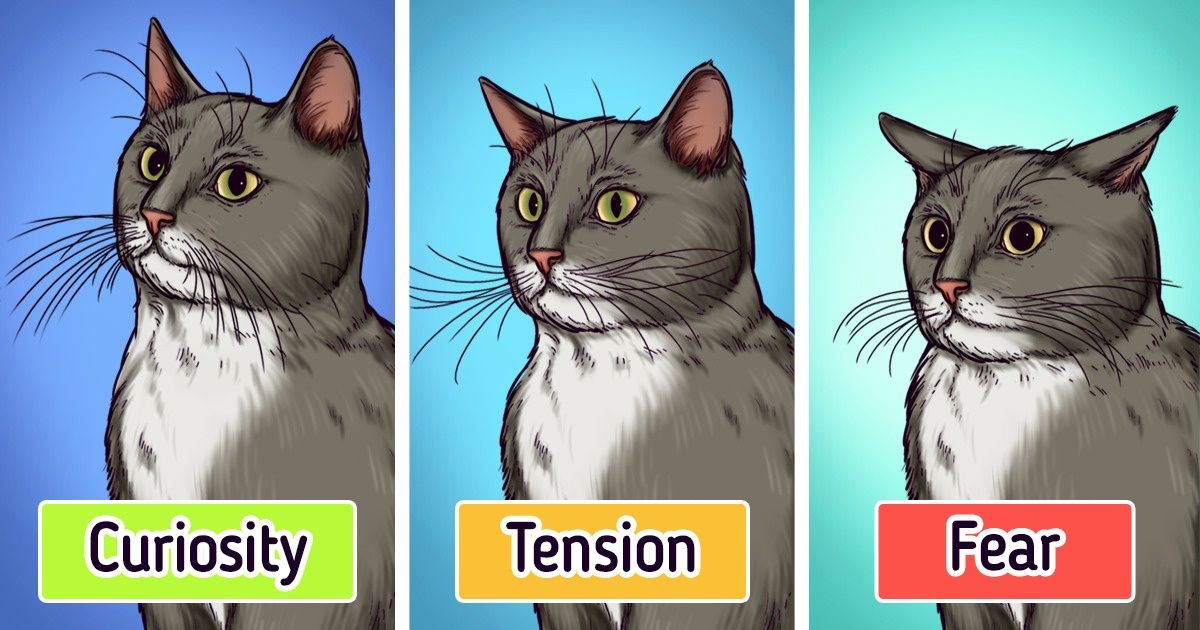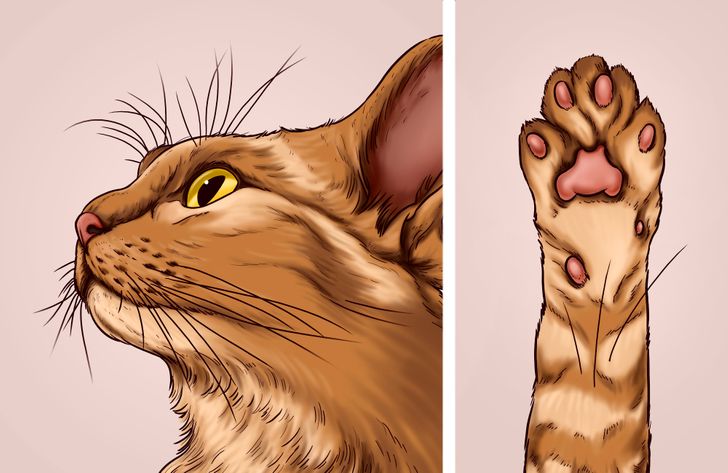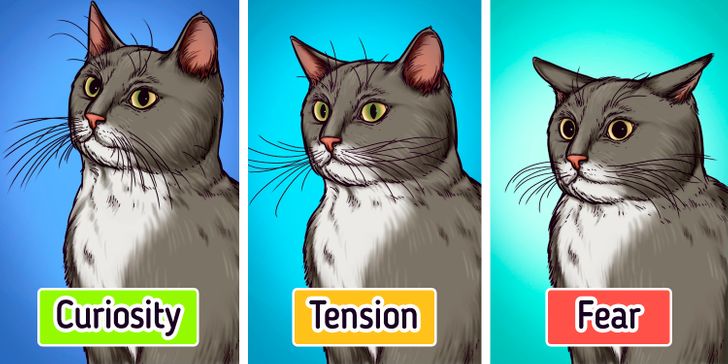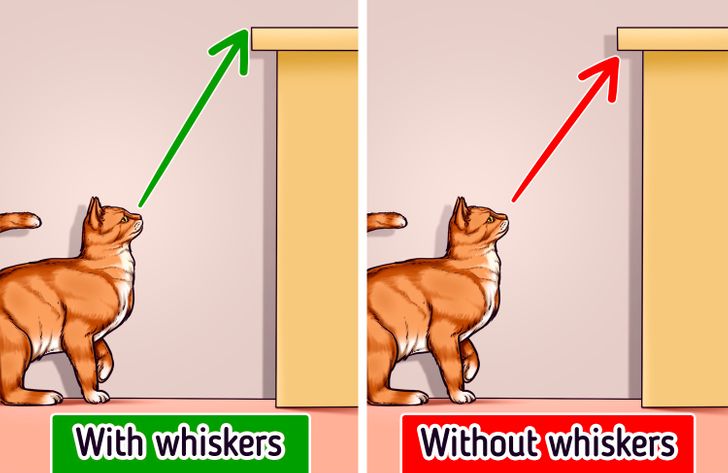Why Cats Have Whiskers

It’s hard to imagine a cat without gorgeous whiskers. And contrary to popular belief, whiskers aren’t just decorative.
5-Minute Crafts would like to tell you about why cats need whiskers and what their functions are.
What whiskers are

A cat’s whiskers, or vibrissae, are tough, sensitive hairs that grow not only around the nose, but also on the forehead, near the eyes, on the chin, and even on the paws. Most cats have 24 vibrissae on their cheeks, 12 on each side.
Not only cats have whiskers. Many other animals, such as dogs, mice, and walruses, have them too.
Why cats need whiskers

Whiskers have a few functions at once.
- Searching for prey: Whiskers increase the chances of a successful hunt. They feel currents of air and help the cat determine if its prey is upwind or downwind. Also, whiskers provide the animal with information about the location and movement of prey.
- Body language: By the position of the whiskers, it’s easy to tell what mood the cat is in. Are the whiskers directed forward? Then the pet is curious about something. Do they begin to move slightly back? The cat feels growing tension. Are they pinned back? The cat is scared.
- Temperature measurement: Whiskers are supplied with a huge number of nerve endings, each of which is a complex receptor. With their help, the cat is able to detect the slightest changes in temperature, pressure, and movement of air currents.
- Night vision: When navigating in the dark, the cat relies mainly on its whiskers. They pick up slight vibrations and build a 3-dimensional map of what is happening around them. The cat pulls its whiskers forward to track any movement.
If a cat loses its whiskers or their sensitivity

A loss of whiskers can make a cat’s life very difficult. After all, whiskers are very important for a cat, and it can take a cat anywhere from 6 weeks to 3 months to grow them back.
If a cat has lost its whiskers, its ability to determine the size of objects gets worse, and it becomes much more difficult for them to navigate through space. And if you trim your cat’s whiskers, it may feel disoriented and frightened.